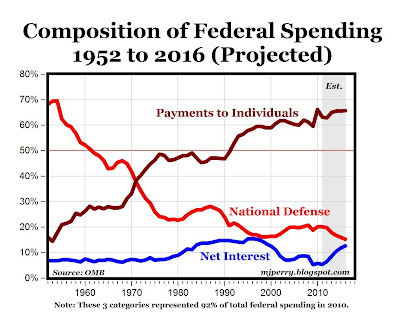
If consumer spending were the key, the economy would be going strong. Real consumer spending peaked in the fourth quarter of 2007, fell slightly (about 2.5%) over the next six quarters, and by the fourth quarter of 2010 exceeded its previous peak by almost 1%. So it is clear that a "collapse" in consumption is not to blame for the economy's anemic recovery.
What is to blame is the collapse of private business investment. Until this critical component of the economy — technically, "private domestic business net investment" — fully recovers, the economy will continue to sputter.
Don't confuse net investment with gross investment.
Gross investment includes expenditures aimed merely at maintaining or replacing existing structures, tools and equipment, software and other capital goods as they become obsolete or wear out.
But unless firms do more than make up for depreciation, they do not expand their productive capacity, except to the extent that they replace worn-out or obsolete capital goods with models that employ improved technology. If all we do is replace a worn-out machine tool with a new one, we have not increased the number of machine tools.
Economic growth requires net investment — investment above and beyond the replacement level — and more rapid economic growth requires a greater rate of increase in such investment.
With that in mind, consider what has happened to net private investment.
Net private investment reached its recent cyclical peak in the third quarter of 2007, when firms were investing at a net annual rate of $463 billion per year. (In that same quarter, gross business investment was running at a $1.66 trillion annual rate.)
Net investment then fell steadily for the next four quarters, reaching $336 billion in the third quarter of 2008 and plummeting to $159 billion in the fourth quarter of 2008, a 53% drop in a single three-month period.
Although the financial-market panic that flared up in September 2008 began to subside early in 2009, net investment continued to fall, going into negative territory (minus $53 billion annually) in the first quarter of 2009 and falling further to minus $119 billion in the second quarter of 2009.
Some improvement began in the next quarter, but for the entire year 2009, net business investment amounted to minus $69 billion. Hardly by coincidence, U.S. gross domestic product also fell substantially in 2009...
Unless private investment recovers more rapidly, the economy's recovery is sure to remain slow, too slow to significantly lower unemployment...
A substantial, rapid recovery of net private business investment probably won't occur until the made-in-Washington clouds clear. Meanwhile, overall economic prospects will remain gloomy.



 source
source



 source
source


 source
source

 source
source





